Femia > Health Library > Pregnancy > Pregnancy week by week > Baby fruit size by week: A trimester-by-trimester guide to your growing little one
Baby fruit size by week: A trimester-by-trimester guide to your growing little one

- Updated Feb 25, 2025
- Published
CRAFTED BY HUMAN
Crafted by human At Femia, we provide accurate and up-to-date information at every stage of your journey, from trying to conceive, pregnancy and postnatal support. All content is created by a real person based on in-depth research and own professional experience. Femia ensures that you will receive expert advice, strict accuracy and a personalized approach from our authors/medical experts. Learn more about our editorial policy.
FACT CHECKED
Fact checked At Femia Health, we maintain the highest standards of editorial excellence in delivering content focused on helping you conceive, guiding you through pregnancy, and supporting you postpartum. Explore our content review principles to learn how we ensure the accuracy and quality of our health and lifestyle tips for every stage of your journey.
Your baby’s growth journey spans three trimesters, each with its own milestones. In the first trimester, your baby will grow from a single cell to about the size of a lime while beginning to form the major organs. In the second trimester, you’ll begin to feel your baby’s first movements, as they grow to the size of an eggplant. Finally, in the third trimester, your baby will gain weight rapidly, reaching the size of a pumpkin just before birth.
Experiencing pregnancy and feeling your baby grow and develop inside you is a miraculous experience. So, it’s natural that you’re curious to follow along with exactly what milestones they’re going through at every stage.
Comparing your developing fetus to different fruit sizes is a common and playful way of visualizing their growth throughout your pregnancy. In this article, we’ll share our baby fruit size chart—along with some facts about their physical changes—so you can imagine how your baby is growing week by week.
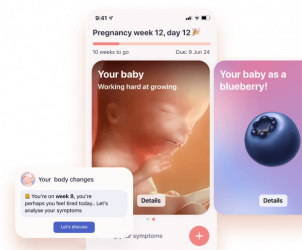
First trimester—Baby fruit size by week: From seed to citrus
In the first trimester, the newly fertilized egg will undergo rapid cell division, growing from the size of a poppy seed to a juicy nectarine in just 13 weeks. During this time, development is focused on the formation of the major organ systems.
👉Find out more: Your pregnancy checklist: Week-by-week guide to preparing for baby
Weeks 1–13: Baby size compared to fruit week by week
- Week 1-3: Baby is forming
- Week 4: Poppy seed
- Week 5: Sesame seed
- Week 6: Single pea
- Week 7: Blueberry
- Week 8: Raspberry
- Week 9: Single grape
- Week 10: Kumquat
- Week 11: Fig
- Week 12: Lime
- Week 13: Peapod
👉 Find out more: First trimester pregnancy diet: 1 to 3-month pregnancy diet chart and meal plans
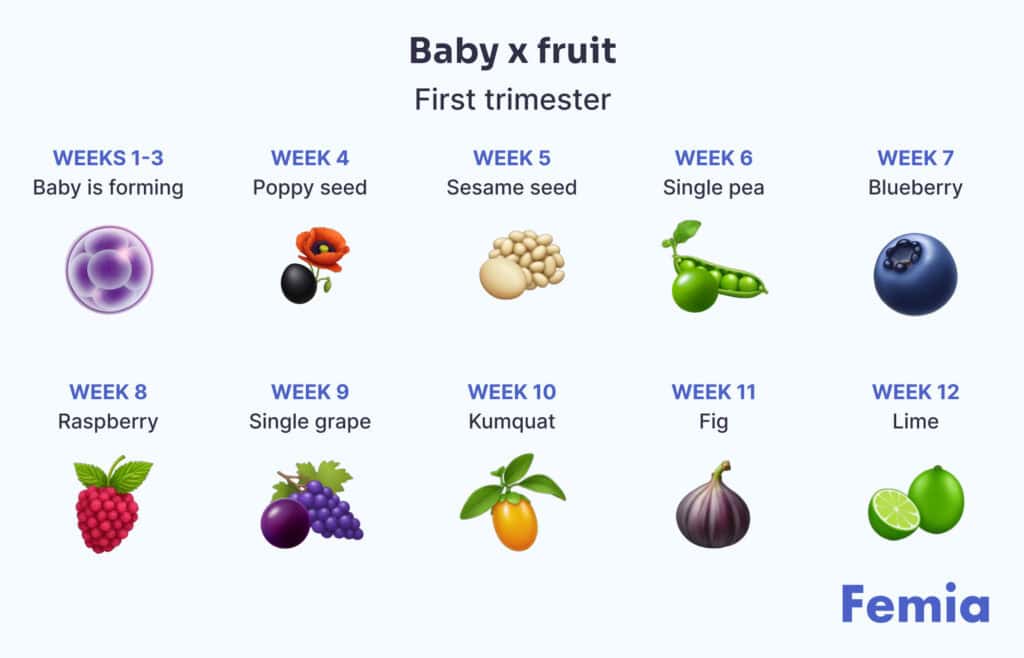
Second trimester—Baby size by week fruit: Growing and thriving
During the second trimester, your baby’s organs and features become refined, and they’ll grow rapidly in length and weight, reaching the size of a head of cauliflower. At this stage, you’ll start feeling their first movements; meanwhile, unpleasant symptoms like morning sickness usually subside, earning this period the nickname of the “honeymoon phase.”
@femia.fertility New fruit is the key event of every week of pregnancy! #pregnancy #baby #fruitsize #plannedparenthood #momtobe #relationship #meme #cutmeme #pregnancytracker ♬ original sound - Femia fertility tracker
Weeks 14–27: Pregnancy fruit chart highlights
- Week 14: Lemon
- Week 15: Apple
- Week 16: Avocado
- Week 17: Pear
- Week 18: Pepper
- Week 19: Mango
- Week 20: Banana
- Week 21: Carrot
- Week 22: Papaya
- Week 23: Grapefruit
- Week 24: Corn
- Week 25: Zucchini
- Week 26: Green onion
👉 Find out more: 10 weird pregnancy symptoms you didn’t know existed
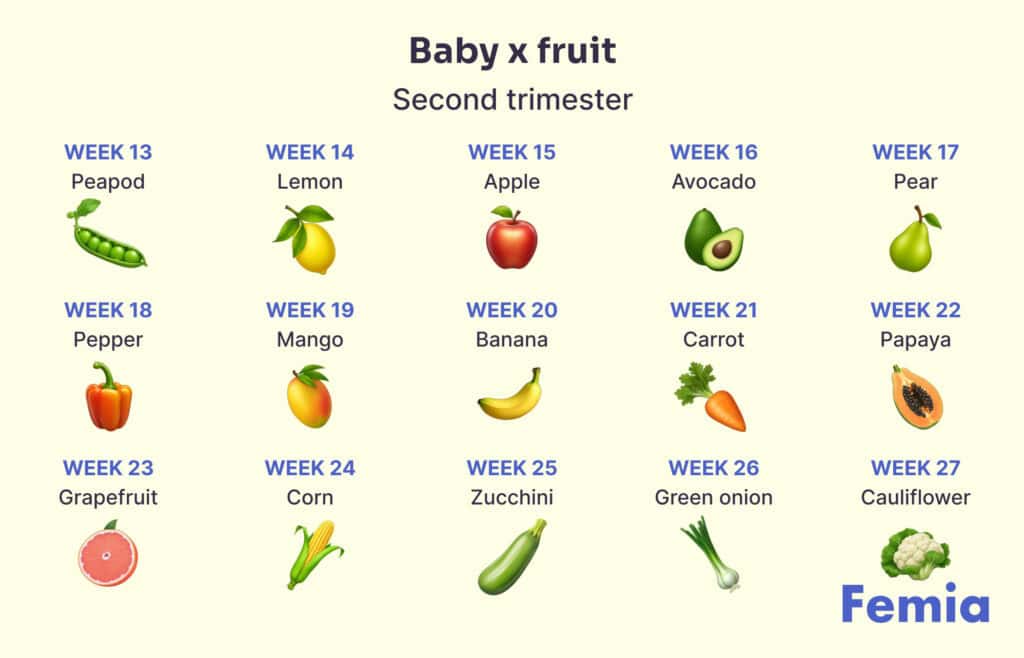
Third trimester—Baby fruit size chart: The final stretch
At last, your baby is almost ready to meet you! In this final stage of pregnancy, your baby rapidly gains weight and will reach the size of a pumpkin by the due date. You’ll notice much more prominent movements as they explore their environment (that’s getting a little cramped) with newly developed sight and hearing. Late in the third trimester, you’ll also notice a position shift as your baby gets ready for labor.

Weeks 28–40: Baby size chart by week finale
- Week 27: Cauliflower
- Week 28: Eggplant
- Week 29: Butternut squash
- Week 30: Cabbage
- Week 31: Coconut
- Week 32: Jicama
- Week 33: Pineapple
- Week 34: Cantaloupe
- Week 35: Honeydew melon
- Week 36: Romaine lettuce
- Week 37: Swiss chard
- Week 38: Leek
- Week 39: Watermelon
- Week 40: Small pumpkin
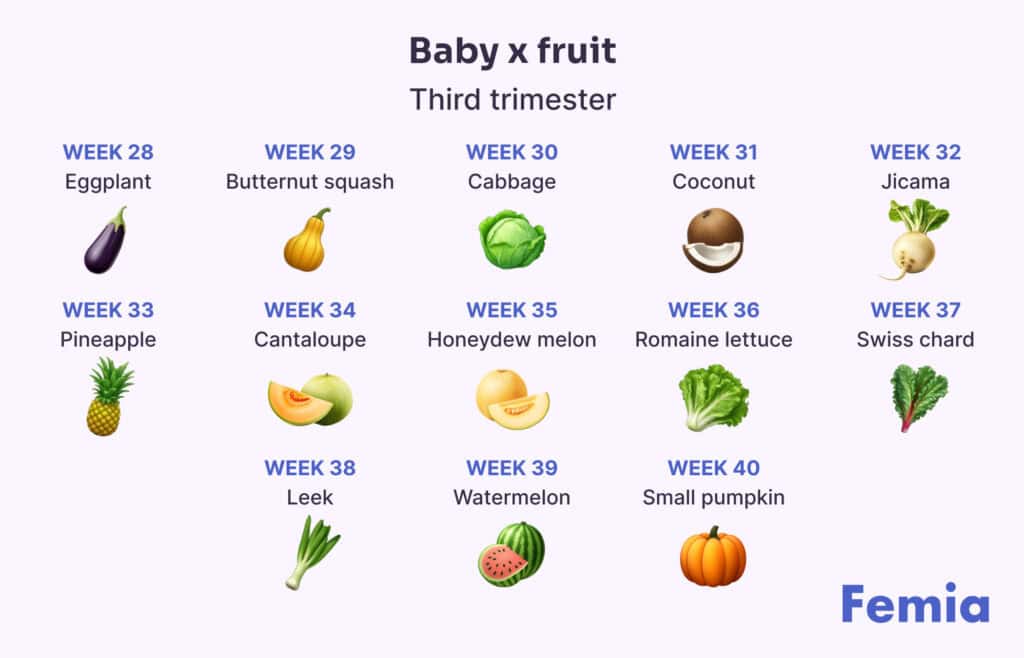
And here’s the whole developmental timeline:
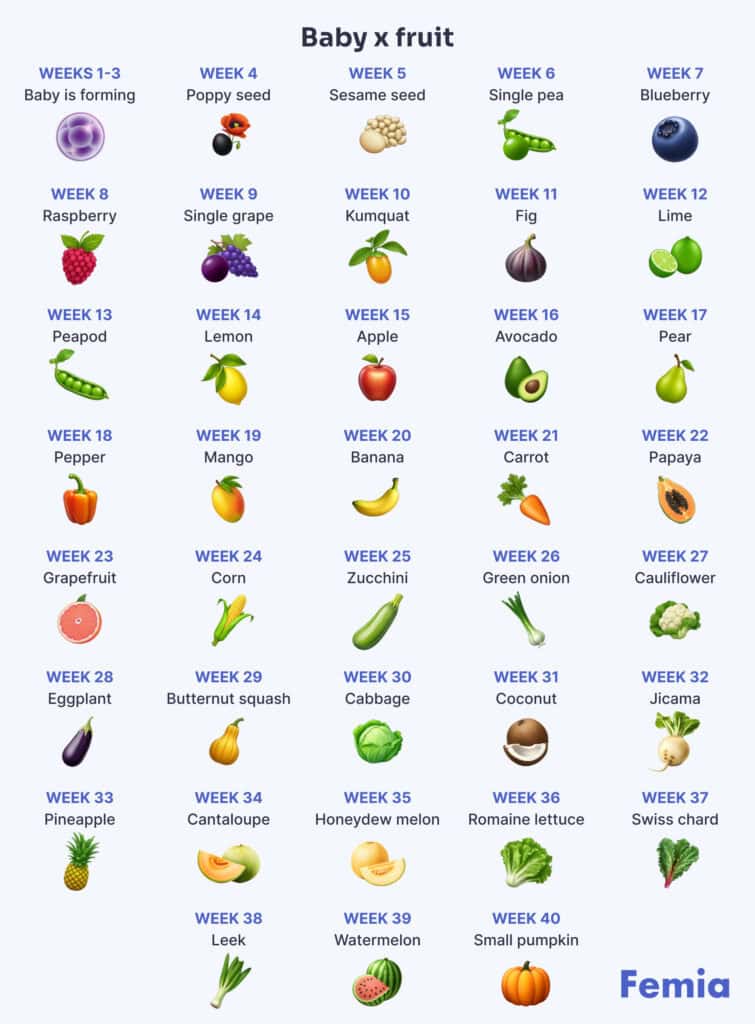
The bottom line
Every body and pregnancy is unique, and these week-by-week comparisons are just guidelines to help you visualize what’s happening in your body. It’s normal not to experience every benchmark exactly on time, and usually nothing to worry about. Your healthcare provider can help address any concerns you might have and provide personalized guidance for your pregnancy journey.
References
- American College of Obstetricians and Gynecologists. “Pregnancy.” ACOG, 2023, www.acog.org/womens-health/pregnancy.
- Mayo Clinic Staff. “Fetal Development: Stages of Growth.” Mayo Clinic, 2022, www.mayoclinic.org/healthy-lifestyle/pregnancy-week-by-week/in-depth/prenatal-care/art-20045302.
- National Health Service. “Your Pregnancy Week by Week.” NHS, 2023, www.nhs.uk/pregnancy/week-by-week/.
- Papageorghiou, A. T., et al. “International Standards for Fetal Growth Based on Serial Ultrasound Measurements: The Fetal Growth Longitudinal Study of the INTERGROWTH-21st Project.” The Lancet, vol. 384, no. 9946, 2014, pp. 869-879.
- World Health Organization. “Maternal and Perinatal Health.” WHO, 2023, www.who.int/health-topics/maternal-health.
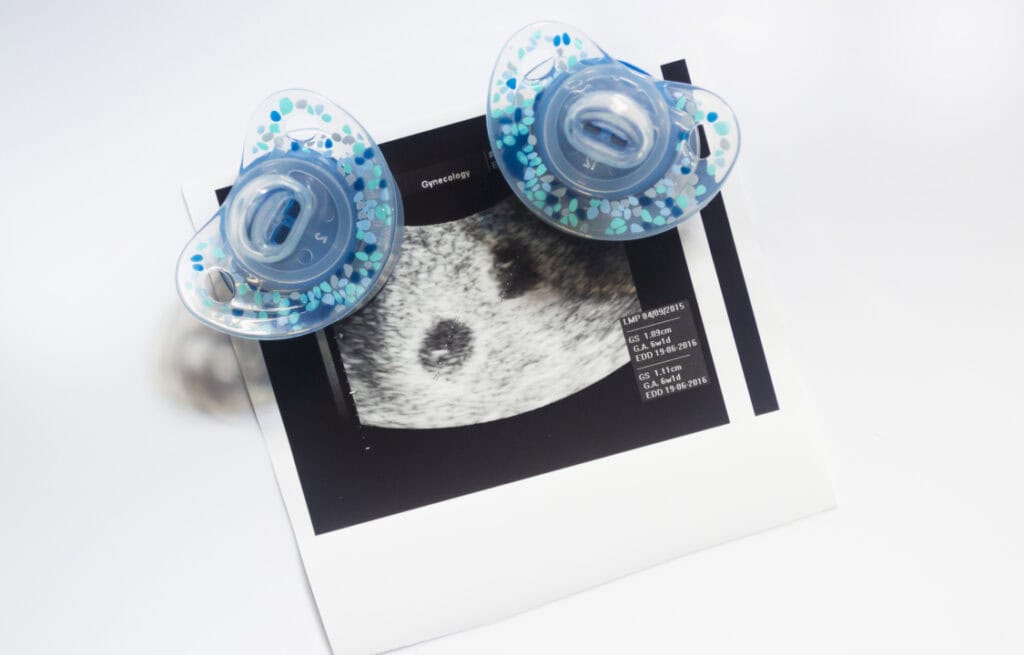
Difference between single and twin pregnancy symptoms week by week: Learn how to identify the difference in pregnancy symptoms and manage them accordingly.

Curious if pregnant women can eat shrimp? Find out if shrimp is safe, how to cook it properly, and what nutrients it offers during pregnancy.

Learn about vanishing twin syndrome in detail with symptoms, causes, and impact on the surviving twin.

